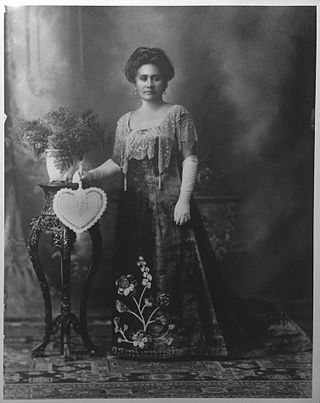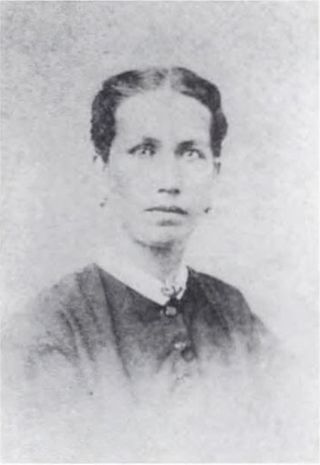
Sun Yat-sen was a Chinese revolutionary statesman, physician, and political philosopher who served as the first provisional president of the Republic of China and the first leader of the Kuomintang. He is called the "Father of the Nation" in the present-day Republic of China (Taiwan) and the "Forerunner of the Revolution" in the People's Republic of China for his instrumental role in the overthrowing of the Qing dynasty during the 1911 Revolution. Sun is unique among 20th-century Chinese leaders for being widely revered by both the Communist Party in Mainland China and the Nationalist Party in Taiwan.

Rosamond Soong Ch'ing-ling was a Chinese political figure. As the third wife of Sun Yat-sen, then Premier of the Kuomintang and President of the Republic of China, she was often referred to as Madame Sun Yat-sen. She was a member of the Soong family and, together with her siblings, played a prominent role in China's politics prior to and after 1949.

ʻIolani School is a private coeducational college preparatory school in Honolulu, Hawaiʻi. It serves over 2,200 students with a boarding program for grades 9 - 12 as well as a summer boarding program for middle school grades. Founded in 1863 by Father William R. Scott, it was the principal school of the former Anglican Church of Hawaiʻi. It was patronized by Kamehameha IV and Queen Emma who gave the school its name in 1870. ʻIolani in the Hawaiian language means "heavenly hawk". Today, ʻIolani School is affiliated with the Episcopal Church in the United States. It is administered by a Board of Governors and is one of the largest independent schools in the United States.

William Pitt Leleiohoku II, born Kalahoʻolewa, was a prince of the Hawaiian Kingdom and member of the reigning House of Kalākaua.

Colonel Curtis Piʻehu Iaukea served as a court official, army officer and diplomat of the Kingdom of Hawaii. He later became an influential official for the subsequent regimes of the Provisional Government and the Republic and the Territory of Hawaii.

Theresa Owana Kaʻōhelelani Laʻanui was a descendant of Kalokuokamaile, the eldest brother of Kamehameha I. She was a member of the House of Laʻanui, a collateral branch of the House of Kamehameha.
The Chinese in Hawaii constitute about 4.7% of the state's population, most of whom (75%) are Cantonese people with ancestors from Zhongshan in Guangdong. This number does not include people of mixed Chinese and Hawaiian descent. If all people with Chinese ancestry in Hawaii are included, they form about 1/3 of Hawaii's entire population. As United States citizens, they are a group of Chinese Americans. A minority of this group have Hakka ancestry.
Koji Ariyoshi (1914–1976) was an American labor activist and a Sergeant in the United States Army during the Second World War.

Kaimuki High School is a WASC-accredited four-year public high school located in Honolulu, Hawaiʻi, United States. Kaimuki High School falls under the jurisdiction of the Hawaii Department of Education. It is bordered by the Manoa-Palolo Drainage Canal, Kapiolani Boulevard, Kaimuki Avenue, Crane Park and Date Street. It is, as its alma mater states, in view of Diamond Head. The campus boasts the sculpture Pueo (owl) by Charles W. Watson.
At their peak, there were six Chinese Society Halls on Maui. Operated by the Gee Kung Tong Society, these halls were created to provide services to immigrant Chinese workers, mostly working for the sugarcane plantations. All provided religious and political help, in addition to mutual aid. Only the Wo Hing Society Hall in Lahaina and the Ket Hing Society Hall in Kula have survived. Both were placed on the Hawaii State Register of Historic Places on July 30, 1982, and placed on the National Register of Historic Places on November 15, 1982. The Chee Kung Tong Society Hall was placed onto both State and Federal registers, but collapsed in 1996.

The Chinatown Historic District is a neighborhood of Honolulu, Hawaii, known for its Chinese American community. It is one of the oldest Chinatowns in the United States.

Soo Yong, was a Chinese-American actress. She acted in 23 Hollywood films and numerous television shows, mostly in supporting roles. Among them were The Good Earth (1937), Love Is a Many-Splendored Thing (1955), and Sayonara (1957). In 1941 she married C.K. Huang.

Emma ʻAʻima Aʻii Nāwahī was a Native Hawaiian political activist, community leader and newspaper publisher. She and her husband Joseph Nāwahī were leaders in the opposition to the overthrow of the Kingdom of Hawaiʻi and they co-founded Ke Aloha Aina, a Hawaiian language newspaper, which served as an important voice in the resistance to the annexation of Hawaiʻi to the United States. After annexation, she helped establish the Democratic Party of Hawaiʻi and became a supporter of the women's suffrage movement.

Chun Afong was a Chinese businessman and philanthropist who settled in the Hawaiian Kingdom during the 19th century and built a business empire in Hawaii, Macau and Hong Kong. He immigrated to Hawaii from Guangdong in 1849 and adopted the surname Afong after the diminutive form of his Cantonese given name, Ah Fong.

The spouse of the mayor of Honolulu is an unpaid ceremonial position. Those who have filled the position have been a reflection of the history of the islands. Several were of Hawaiian ancestry. Emma Fern was a Hawaiian chanter and dancer. Kini Kapahu Wilson was not only a proponent of women's voting suffrage, but also found fame as a hula dancer who performed for heads of state around the world.

Julia Hope Kamakia Paaikamokalani o Kinau Beckley Fayerweather Afong was a Hawaiian high chiefess who married Chinese millionaire merchant Chun Afong with whom she had sixteen children. She was of British, American and Hawaiian descent.

Dora Chung Zane was a medical social worker and clubwoman in Hawaii, specializing in services for blind people and children with disabilities.

Mary Li Sia was a Chinese-American teacher and cookbook author, called "the Julia Child of Hawai'i" for her long and visible career teaching and writing about Chinese food.

Vivia Belle Appleton was an American physician, specializing in pediatrics. She worked in San Francisco, in France during World War I, in Labrador, in Shanghai, and in Hawaii.
Sun Mei was the older brother of Sun Yat-Sen. Sun Mei financed Sun Yat-sen's early education and was a major financial contributor to the 1911 revolution.
















